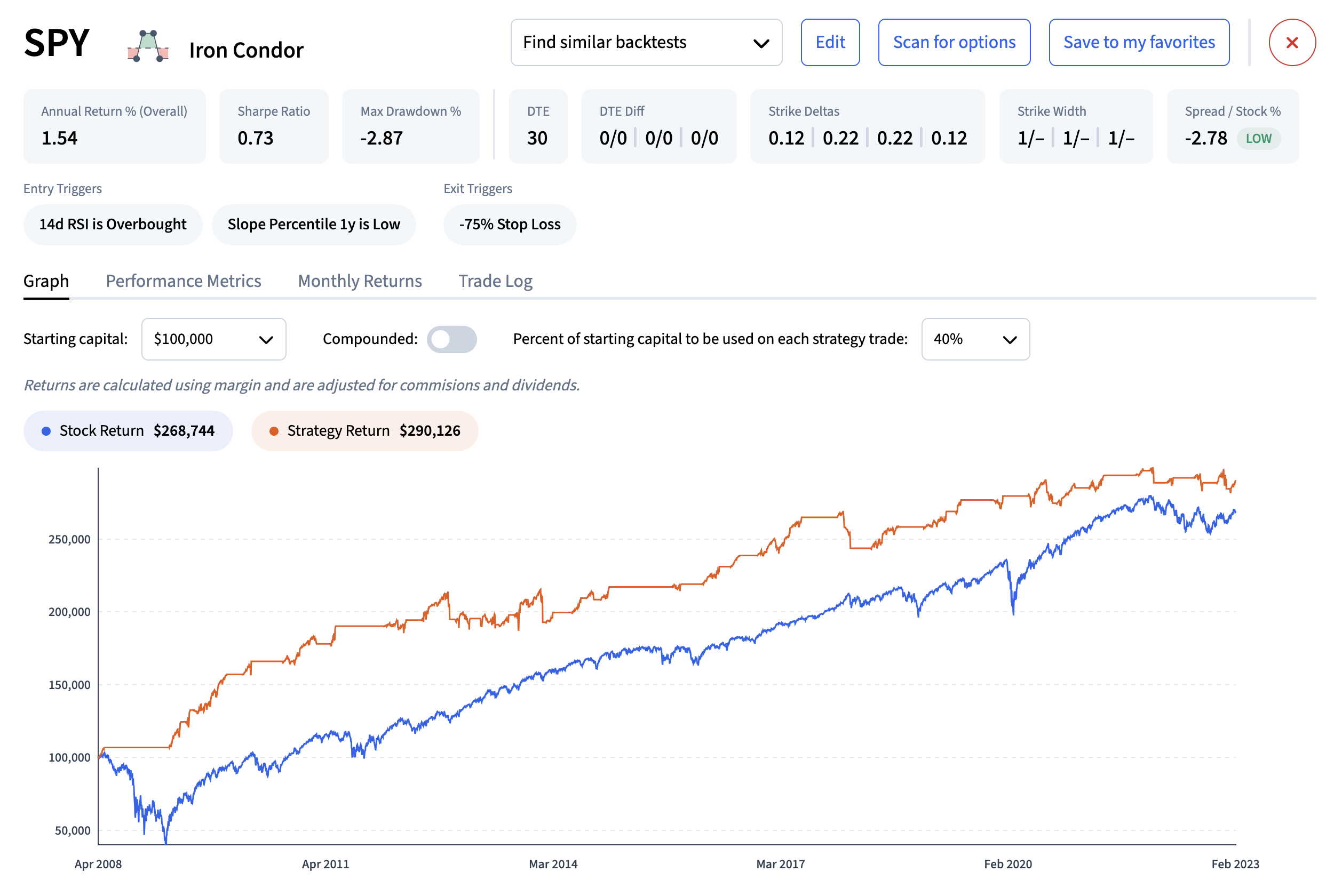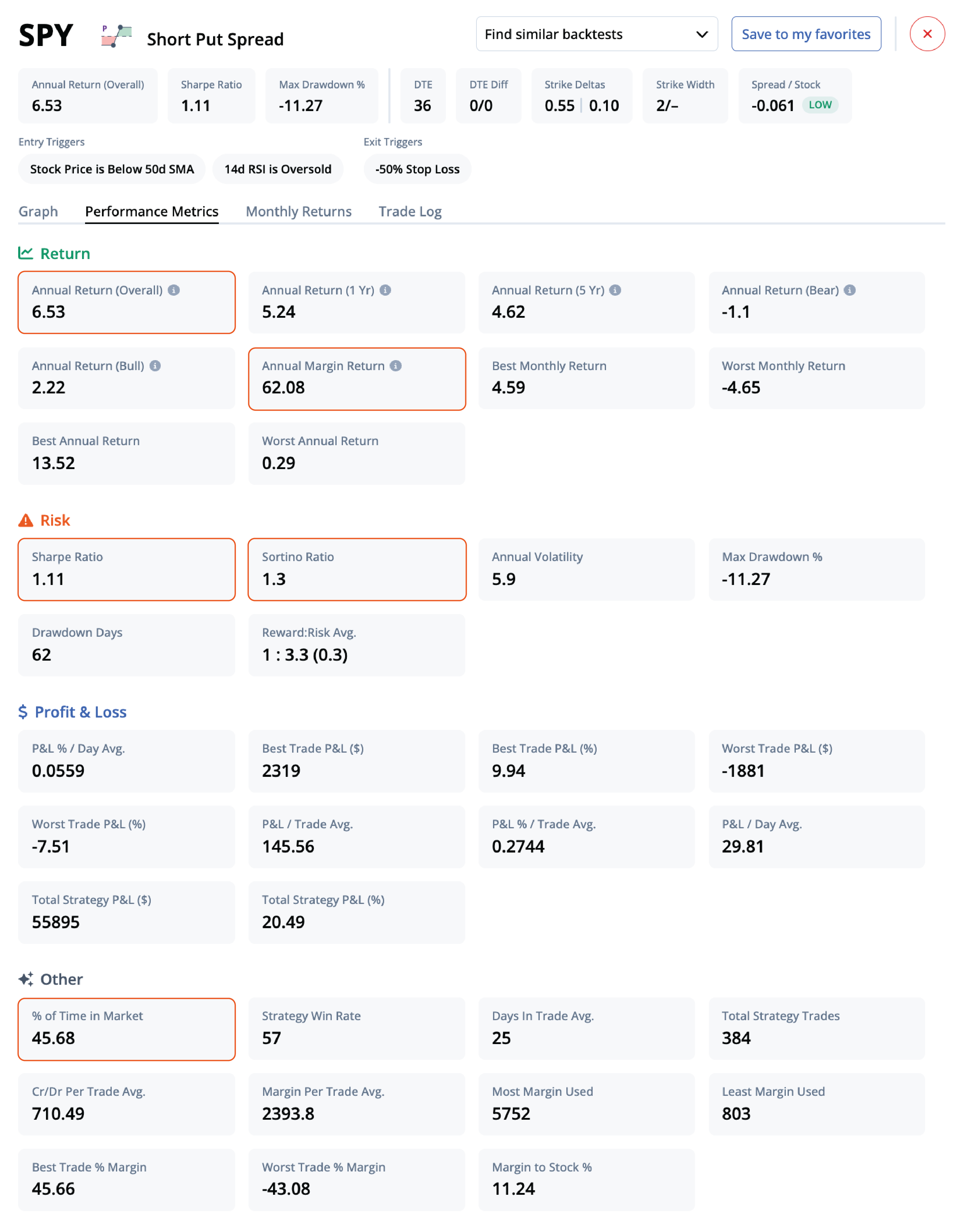Backtesting
Thursday, November 21st 2019
Which Diagonal Put Spread Strategy Is Right For You?
Optimizing the Diagonal Put Spread Strategy using ORATS backtesting feature.
Summary
The diagonal put spread strategy involves buying a long-term put and selling a short-term put, but traders must decide on the relationship between days to expiration, deltas, and price. Backtesting can help optimize returns and match investor preferences for risk and returns. ORATS backtesting feature allows for automatic parameter combinations, and the results show that the highest average returns and Sharpe Ratio were short the 60-day long the 555-day put, long the 10 delta short the 40 delta, and receiving a credit of 1% for the spread yield. Further analysis is recommended to gain more confidence in the backtest results.
The diagonal put spread buys a long term put and sells a short term put. There are various relationships of days to expiration, deltas and price that the trader needs to decide between. Optimizing the return results in a backtest is a good way to start the decision making process. Investors will have varying objectives between risk and returns. The optimizing process described here allows investors to hone in on the strategy that produces risk adjusted returns that best match investor preferences.
The Optimizer function in our backtester allows the automatic combinations of parameters of trading strategies. To optimize diagonal put spreads, we tested various days to expiration (DTE) combinations, delta combinations of leg 1 & leg 2, and spread yield (options spread price divided by stock price). In all, there were 126 backtests run from combining the parameters, 7 DTE parameters, 6 deltas, and 3 spread yield amounts 126=7*6*3.
A good way to start the analysis is to average the returns of all of the backtests by DTE. Below are the variations of days to expiration, Ideal | Minimum | Maximum with Leg2 being the short put and Leg1 the long, for example, the highest average returns and Sharpe Ratio was short the 60 day long the 555 day put:

Secondly, delta combinations averages are shown by Ideal | Minimum | Maximum. For example, the highest average returns and Sharpe Ratio was long the 10 delta short the 40 delta tied with short the 5 delta long the 40 delta:

Lastly, average returns and Sharpe ratios are show by the three spread yields used in the backtests, Ideal | Minimum | Maximum. For example, the highest Sharpe Ratio was the zero priced spread (vs a credit or debit) however the best annual return was receiving a credit of 1%:

Here are the results of the top strategies shorted by Sharpe in our Optimizer:
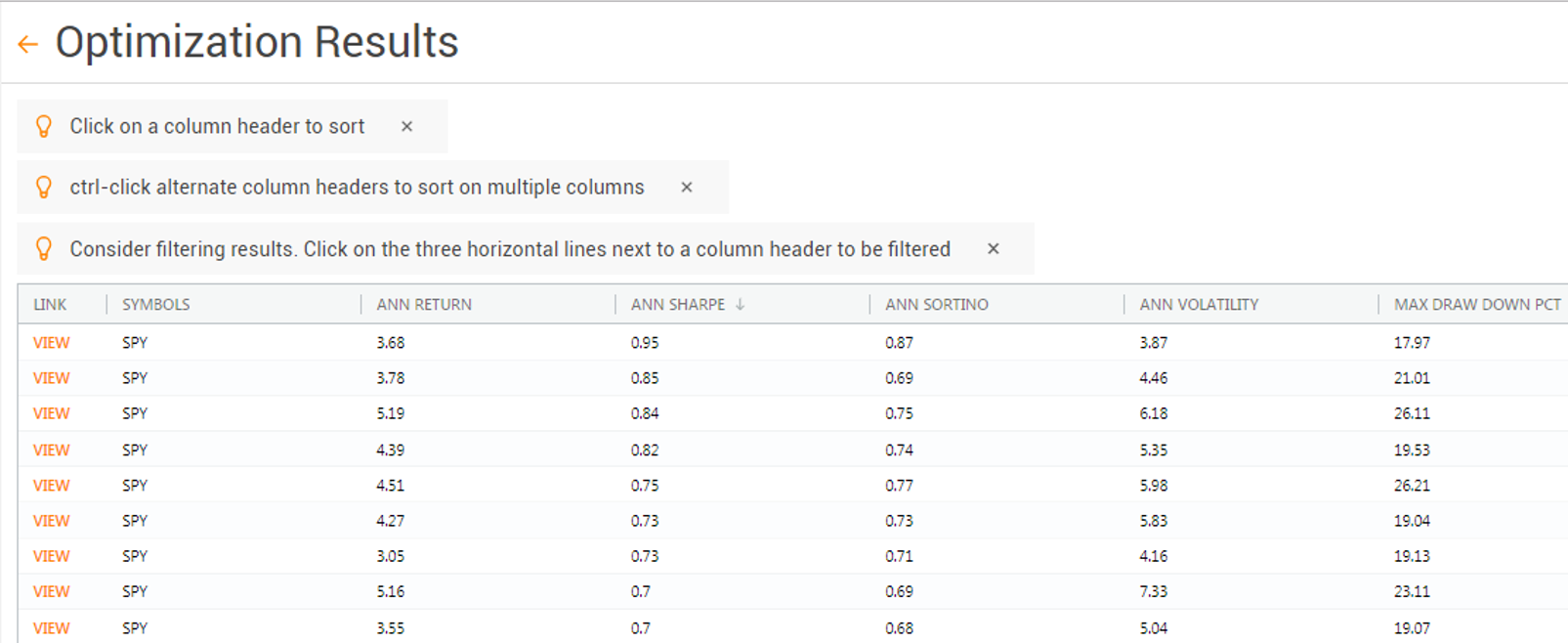
The highest single overall backtest in terms of Sharpe based on notional (stock price) not margin returns was:
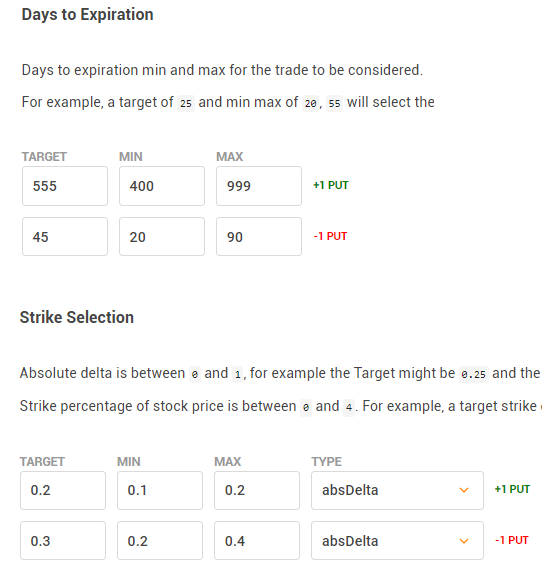
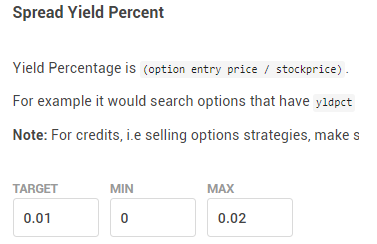
Here are the monthly and yearly stats back to 2007:
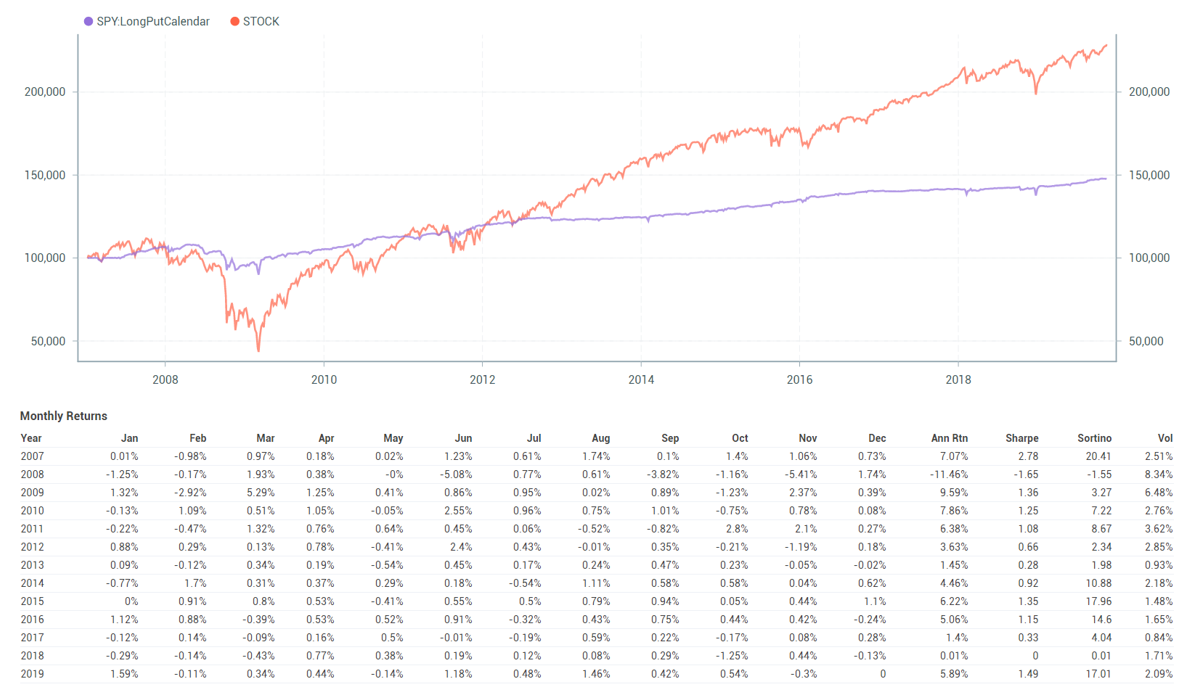
The highest single overall backtest in terms of annual return was:
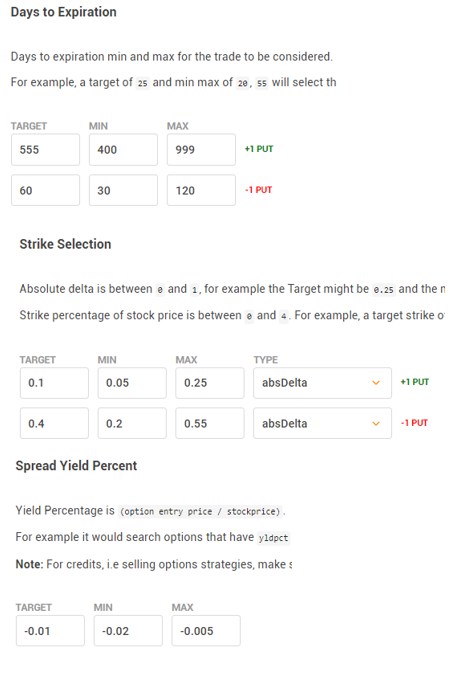
Here are the monthly and yearly stats:
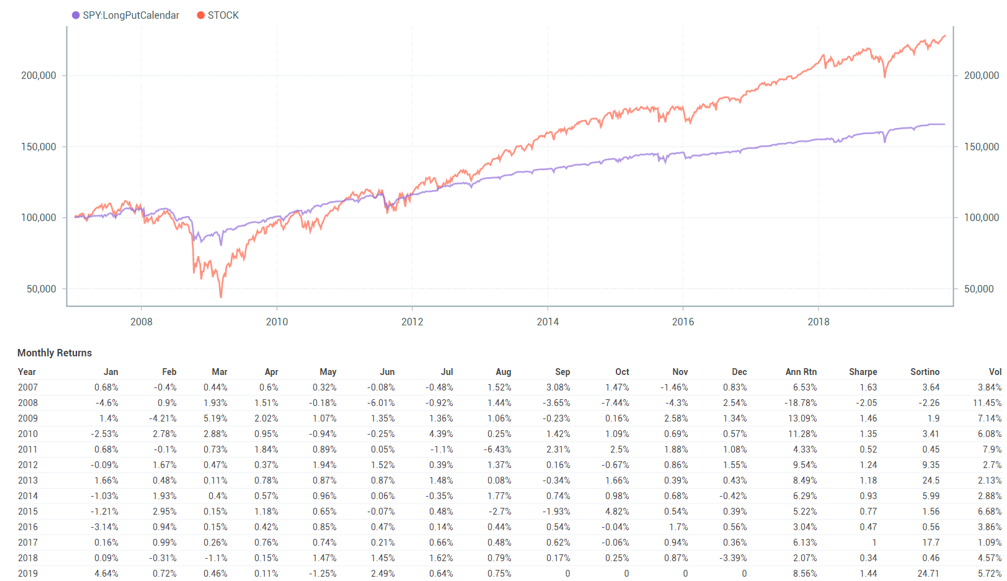
The optimization process is a good way to get started analyzing the types of diagonal put spreads strategies that might make sense for the investor. Further analysis out of sample and in related symbols will help the investor gain more confidence in the backtest results.
Disclaimer:
The opinions and ideas presented herein are for informational and educational purposes only and should not be construed to represent trading or investment advice tailored to your investment objectives. You should not rely solely on any content herein and we strongly encourage you to discuss any trades or investments with your broker or investment adviser, prior to execution. None of the information contained herein constitutes a recommendation that any particular security, portfolio, transaction, or investment strategy is suitable for any specific person. Option trading and investing involves risk and is not suitable for all investors.
All opinions are based upon information and systems considered reliable, but we do not warrant the completeness or accuracy, and such information should not be relied upon as such. We are under no obligation to update or correct any information herein. All statements and opinions are subject to change without notice.
Past performance is not indicative of future results. We do not, will not and cannot guarantee any specific outcome or profit. All traders and investors must be aware of the real risk of loss in following any strategy or investment discussed herein.
Owners, employees, directors, shareholders, officers, agents or representatives of ORATS may have interests or positions in securities of any company profiled herein. Specifically, such individuals or entities may buy or sell positions, and may or may not follow the information provided herein. Some or all of the positions may have been acquired prior to the publication of such information, and such positions may increase or decrease at any time. Any opinions expressed and/or information are statements of judgment as of the date of publication only.
Day trading, short term trading, options trading, and futures trading are extremely risky undertakings. They generally are not appropriate for someone with limited capital, little or no trading experience, and/ or a low tolerance for risk. Never execute a trade unless you can afford to and are prepared to lose your entire investment. In addition, certain trades may result in a loss greater than your entire investment. Always perform your own due diligence and, as appropriate, make informed decisions with the help of a licensed financial professional.
Commissions, fees and other costs associated with investing or trading may vary from broker to broker. All investors and traders are advised to speak with their stock broker or investment adviser about these costs. Be aware that certain trades that may be profitable for some may not be profitable for others, after taking into account these costs. In certain markets, investors and traders may not always be able to buy or sell a position at the price discussed, and consequently not be able to take advantage of certain trades discussed herein.
Be sure to read the OCCs Characteristics and Risks of Standardized Options to learn more about options trading.
Related Posts
